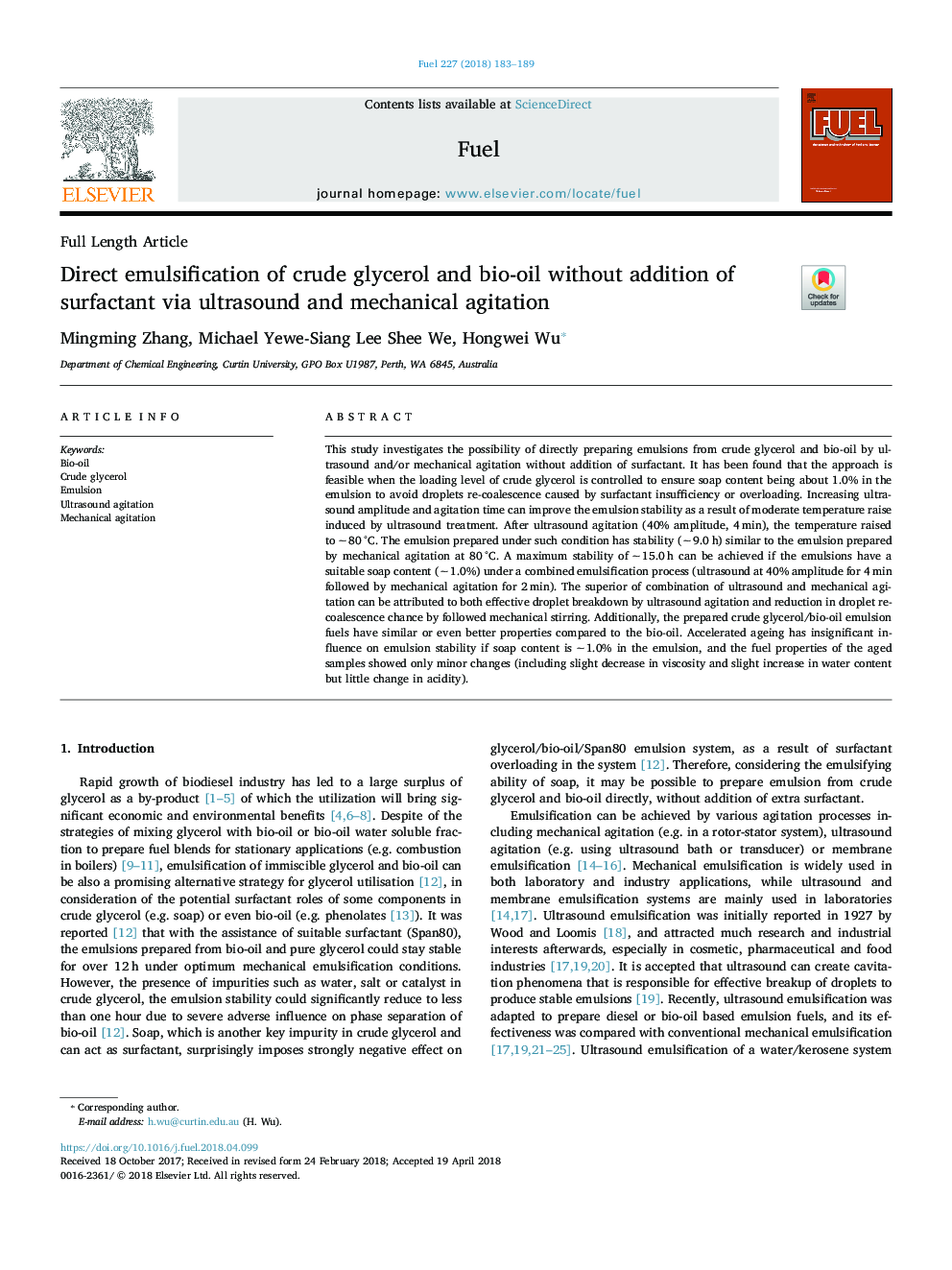| Article ID | Journal | Published Year | Pages | File Type |
|---|---|---|---|---|
| 6630804 | Fuel | 2018 | 7 Pages |
Abstract
This study investigates the possibility of directly preparing emulsions from crude glycerol and bio-oil by ultrasound and/or mechanical agitation without addition of surfactant. It has been found that the approach is feasible when the loading level of crude glycerol is controlled to ensure soap content being about 1.0% in the emulsion to avoid droplets re-coalescence caused by surfactant insufficiency or overloading. Increasing ultrasound amplitude and agitation time can improve the emulsion stability as a result of moderate temperature raise induced by ultrasound treatment. After ultrasound agitation (40% amplitude, 4â¯min), the temperature raised toâ¯â¼80â¯Â°C. The emulsion prepared under such condition has stability (â¼9.0â¯h) similar to the emulsion prepared by mechanical agitation at 80â¯Â°C. A maximum stability ofâ¯â¼15.0â¯h can be achieved if the emulsions have a suitable soap content (â¼1.0%) under a combined emulsification process (ultrasound at 40% amplitude for 4â¯min followed by mechanical agitation for 2â¯min). The superior of combination of ultrasound and mechanical agitation can be attributed to both effective droplet breakdown by ultrasound agitation and reduction in droplet re-coalescence chance by followed mechanical stirring. Additionally, the prepared crude glycerol/bio-oil emulsion fuels have similar or even better properties compared to the bio-oil. Accelerated ageing has insignificant influence on emulsion stability if soap content isâ¯â¼1.0% in the emulsion, and the fuel properties of the aged samples showed only minor changes (including slight decrease in viscosity and slight increase in water content but little change in acidity).
Related Topics
Physical Sciences and Engineering
Chemical Engineering
Chemical Engineering (General)
Authors
Mingming Zhang, Michael Yewe-Siang Lee Shee We, Hongwei Wu,
